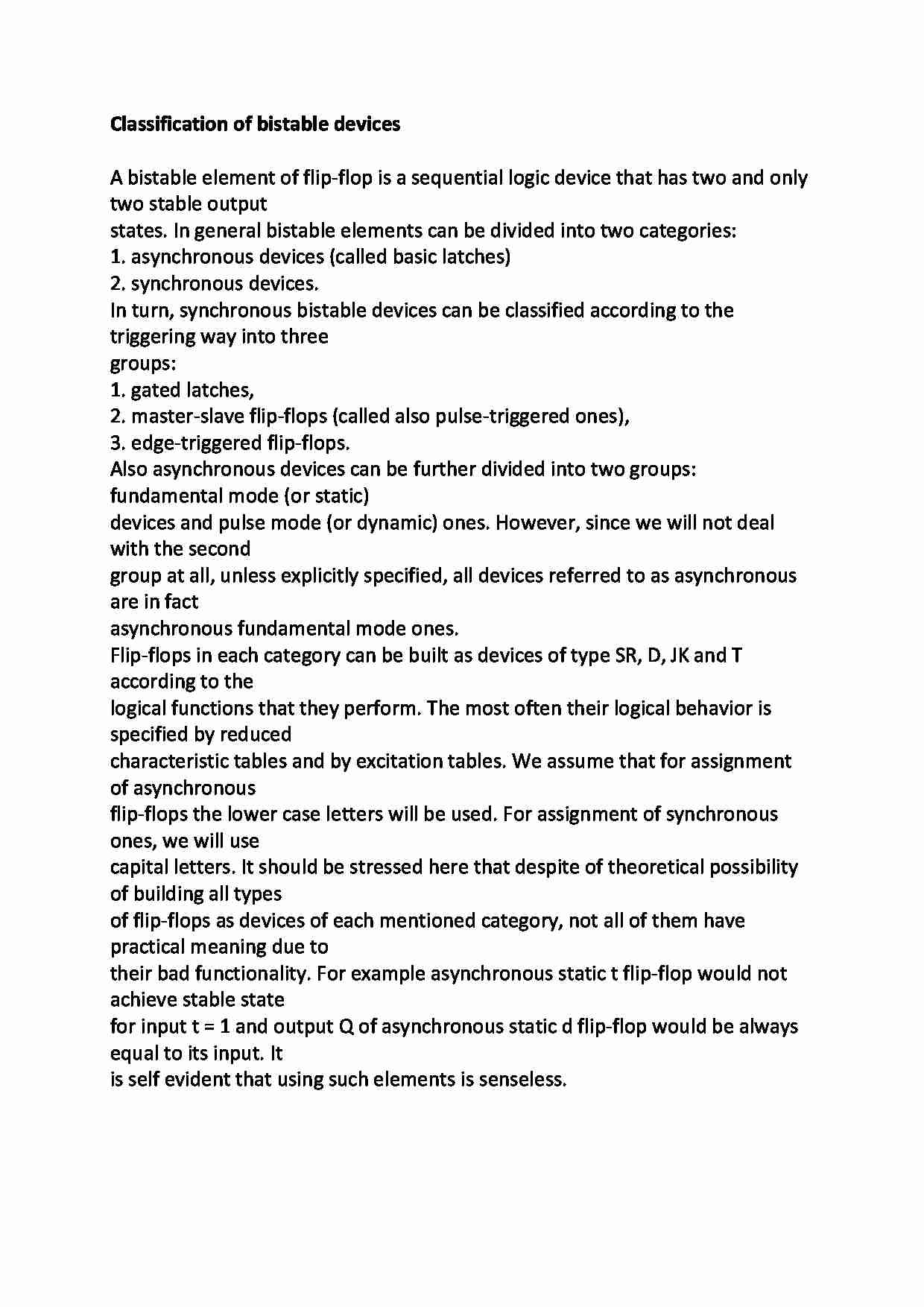
Classification of bistable devices A bistable element of flip-flop is a sequential logic device that has two and only two stable output
states. In general bistable elements can be divided into two categories:
1. asynchronous devices (called basic latches)
2. synchronous devices.
In turn, synchronous bistable devices can be classified according to the triggering way into three
groups:
1. gated latches,
2. master-slave flip-flops (called also pulse-triggered ones),
3. edge-triggered flip-flops.
Also asynchronous devices can be further divided into two groups: fundamental mode (or static)
devices and pulse mode (or dynamic) ones. However, since we will not deal with the second
group at all, unless explicitly specified, all devices referred to as asynchronous are in fact
asynchronous fundamental mode ones.
Flip-flops in each category can be built as devices of type SR, D, JK and T according to the
logical functions that they perform. The most often their logical behavior is specified by reduced
characteristic tables and by excitation tables. We assume that for assignment of asynchronous
flip-flops the lower case letters will be used. For assignment of synchronous ones, we will use
capital letters. It should be stressed here that despite of theoretical possibility of building all types
of flip-flops as devices of each mentioned category, not all of them have practical meaning due to
their bad functionality. For example asynchronous static t flip-flop would not achieve stable state
for input t = 1 and output Q of asynchronous static d flip-flop would be always equal to its input. It
is self evident that using such elements is senseless.
... zobacz całą notatkę



Komentarze użytkowników (0)